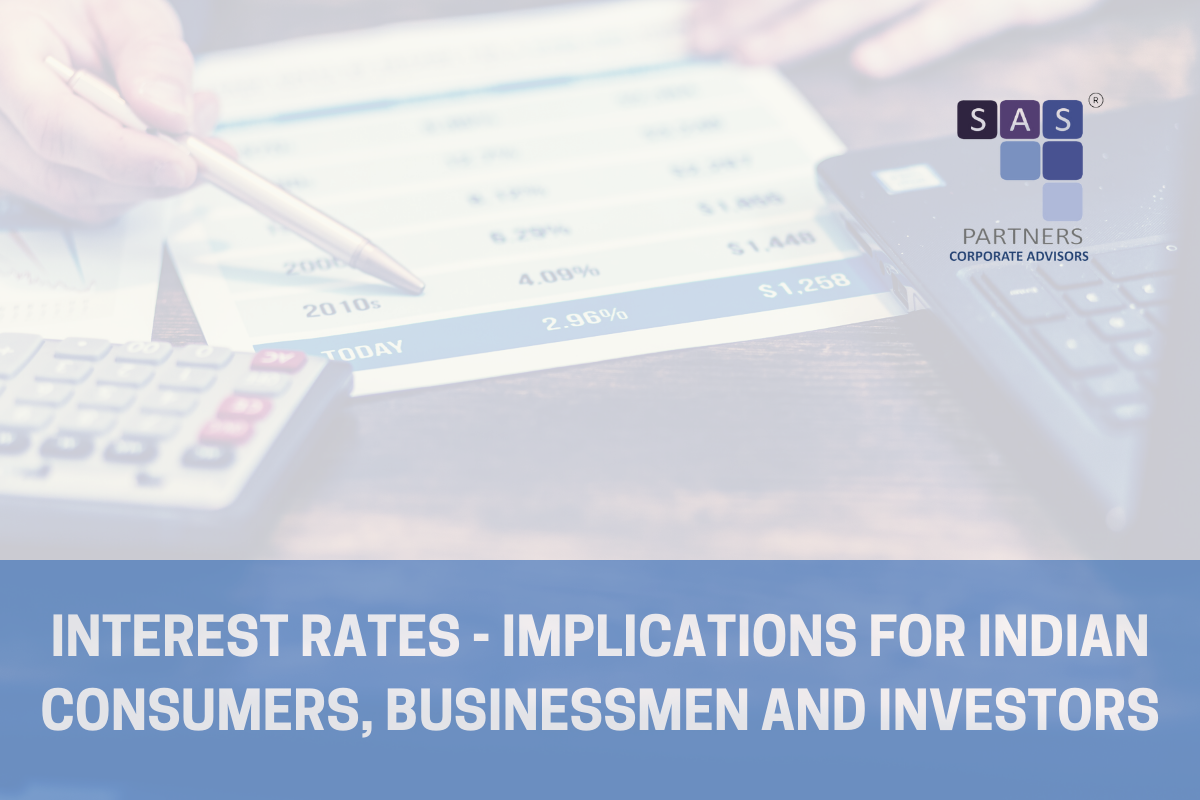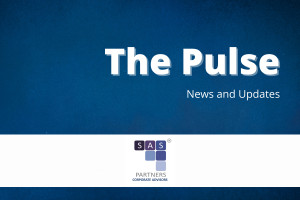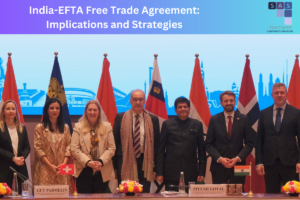
INDIAN ECONOMY & GLOBAL DEVELOPMENT
INTEREST RATES
Inflation and interest rates are two sides of the same coin. When the inflation rate increases, interest rates also rise and vice-versa. This has resulted in an increase in interest rates by central banks.
Interest Rates
Interest rate is nothing but the cost of borrowing money. When interest rates are low, people and businesses borrow more money and when the cost of borrowing rises, the demand for money goes down. Typically, the central banks of countries, which are government controlled, are responsible for managing interest rates.
For example, the Reserve Bank of India controls interest rates in our country and the Federal Reserve does the same in the USA. Interest rate is perhaps the most important tool in monetary policy. Monetary policy is the control of the quantity of money available in an economy and the channels by which new money is supplied or released into the economy.
Monetary policies are largely of two types, expansionary and contractionary. Expansionary monetary policy tries to increase the flow of money in an economy, especially when consumer demand and investments are low and there is slow growth. On the contrary, contractionary monetary policy tries to take away money from the hands of consumers and companies as there is too much money in the system, which in turn leads to inflation. When inflation is low, interest rates tend to be low. When inflation is high, interest rates are increased to discourage borrowing.
The Current Scenario
Today, in almost every country, there is high inflation. As a reaction to controlling inflation, central banks in most countries have increased interest rates making it more expensive to borrow money. At the same time, there are recessionary trends in some of the major economies. When there is slow growth, an increase in unemployment but also high inflation, economists call such a situation stagflation. The world is facing stagflation today which is a very difficult situation to deal with.
High inflation and increase in interest rates have already resulted in recessionary trends in many countries. The USA, UK, Europe, Germany, Japan, China and many other countries are either moving towards recession or are going to suffer from very low growth rates. This in turn will affect global trade and investment.
High-interest rates can have good and unpleasant effects. When interest rates are high, the cost of borrowing increases. This results in, for example, higher mortgage rates, higher cost of food and daily essentials, lower consumption, lower investment, a decline in equity prices and lower growth rates. Imports will become more expensive but exporters will gain more as the currency depreciates.
The positive effects of increasing interest rates can be increased savings rates as banks offer higher interest rates for deposits, control of runaway prices of goods and services and in stronger economies, appreciation of the currency of the country. By restricting the flow of money, the economy cools down and this lowers inflation rates.
Effect in India
The repo rate which is the rate at which the Reserve Bank of India lends to commercial banks has increased from 4.40% in May 2022 to 5.90% in September 2022. This is a high rate of increase and will adversely affect virtually all economic activities. The Rupee has depreciated against the dollar from around INR 75 for one dollar in May 2022 to INR 82 in September 2022 approximately. This again is a huge fall. What are the implications for Indian consumers, businessmen and investors?
Firstly, borrowing money will cost more. Home loans, car loans, credit card rates, etc. will now cost more. Companies that were looking to borrow to expand their activities will now either borrow less or wait till the rates come down. The share market too will be affected as there is less liquidity in the economy, thereby reducing people’s demand for equity.
At the same time, higher interest rates will encourage people to put more money into savings accounts. The World Bank has very recently reduced the prospects for India’s GDP growth from 7.2% in an earlier forecast to 6.5%. Imports will become more expensive but exporters will realize higher values due to the depreciation of the rupee. Though India may not get into recessionary trends, the economy will slow down next year. Unemployment too will increase resulting in a loss of jobs across most industries.
The RBI is now in a situation where it has to tread very carefully. On the one hand, it needs to increase interest rates to curb inflation. At the same time, the RBI needs to encourage and support growth and prevent the Indian economy going downwards. This is not an easy situation to be in.
In the current scenario, it is important for the RBI to bring down inflation and till prices show a downward trend and inflation comes down to around 5%, the RBI will be obliged to keep interest rates high. Under these circumstances, we will witness some hardships in the form of high interest rates and lower economic activity for at least a year before the global and Indian economies begin to show positive signs of growth without inflation.
About the Author
 |
VIJAY KUMAR VADDADI, India Entry & International Affairs
Mr. Vijay Kumar is an Industrial Economist with 35+ years of experience in Economic Analysis, Trade & Investment Promotion, International Business Strategy & Cross-Cultural Impact. A Post-Graduate in Economics with specialization in Industrial Economics and Economics of Transportation, Public Utilities & Social Infrastructure from the University of Bombay (1982). In 1984, he joined the Consulate General of the Netherlands in Mumbai as Economic & Commercial Officer and continued his association with the Netherlands Government (NBSO) for over 30 years. At SAS Partners, he heads the Trade and Investment Promotion activities, supports in organising programmes for international business delegations, curating knowledge reports, market studies and also helps our international clients in understanding the Indian business landscape better. |



